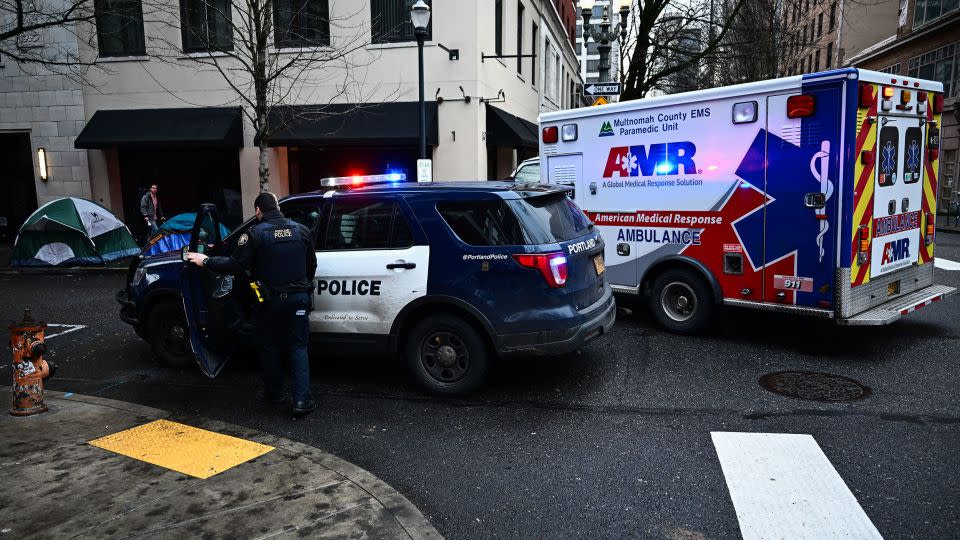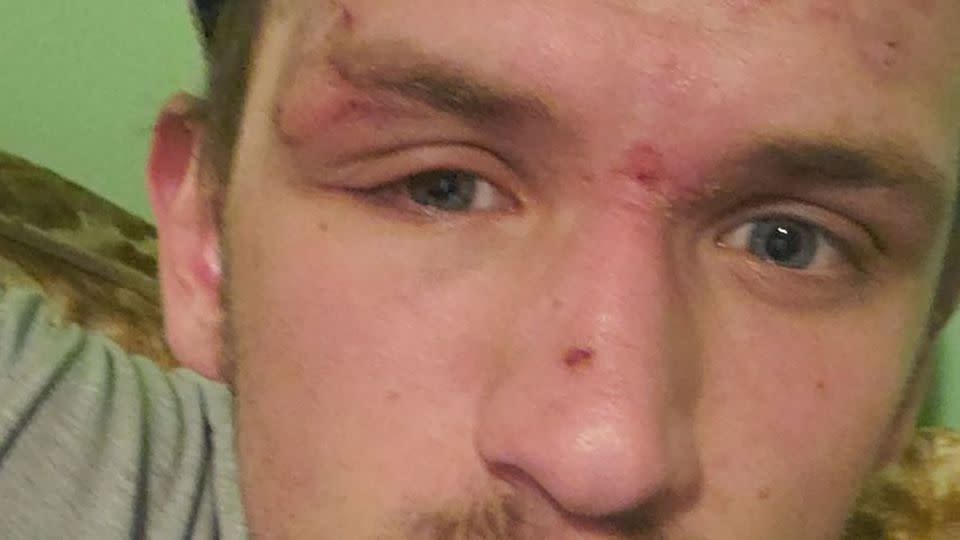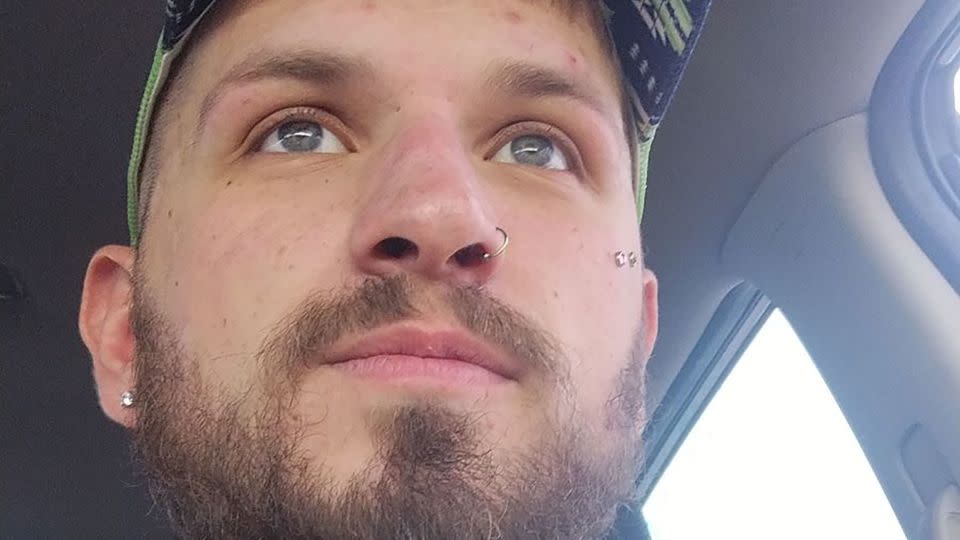Small gift cards can be a key tool to stop stimulant addiction, but stigma stands in the way
Clyde Davis battled a methamphetamine and heroin addiction for over nine years. He tried various treatment programs, but none worked for him before he reached his insurance maximum and was forced to discharge.
“I was trying to die; just putting myself through torture because I didn’t feel like I deserved to live and be happy,” Davis said.
Then three years ago, he became one of the first participants in a new contingency management program at the Rimrock Foundation, Montana’s oldest nonprofit addiction treatment center.
Contingency management uses positive reinforcement as a behavioral treatment for stimulant addiction. People are rewarded with small-value gift cards or vouchers for submitting urine drug tests negative for stimulants.
Decades of research show that it is the most effective treatment for stimulant addiction, but it has not been widely implemented due to policy barriers and stigma.
The program changed the game for Davis. He said that the rewards and counseling gave him hope and made him more willing to accept help.
“I was able to get myself some clothes, something to eat,” he said. “It really motivated me to want to keep showing up and keep having clean [drug tests].”
Davis graduated from the 12-week program successfully and has abstained from drugs ever since. He now works as a rehabilitation technologist at the Rimrock Foundation, alongside the people who he says helped save his life.
“I am living a life that I never thought I would ever dream of living. It’s beautiful,” he said.
Stimulants are a class of drugs that speed up the body’s systems and can lead to increased alertness, energy and feelings of euphoria. These drugs can be very addicting because they flood the brain with dopamine, hijacking reward pathways, according to a report by the Substance Abuse and Mental Health Services Administration.
Prescription stimulants are used to treat ADHD and narcolepsy. Other stimulants, like methamphetamine and cocaine, are considered drugs of abuse, according to the Drug Enforcement Agency. Misuse of these drugs is associated with agitation, hostility, panic, aggression, and suicidal or homicidal tendencies.
Illegal stimulants, like methamphetamine and cocaine, are playing an increasingly large role in the national overdose crisis. Experts have called it the “fourth wave” of the opioid epidemic. While the first wave of opioid overdose deaths was driven by prescription opioids, the second wave by heroin, the third wave by synthetic opioids, this “fourth wave” is characterized by extremely potent synthetic opioids like fentanyl and concurrent stimulant use.

Data from the US Centers for Disease Control and Prevention shows that overdose deaths in the United States involving cocaine increased by more than 5-fold, and overdose deaths involving methamphetamine increased by more than 14-fold between 2011 and 2021. In 2021, more than 106,000 people died of a drug overdose in the United States – and over half of those deaths involved a stimulant.
Michael McDonell, professor of community and behavioral health at the Washington State University Elson S. Floyd College of Medicine, said that the increasing potency of stimulants is one factor contributing to the uptick in stimulant-involved overdose deaths. Another factor is the increasing concurrent use of stimulants and opioids, he said. Some people purposefully mix the two to use the “upper” effect of the stimulant to offset the fatigue caused by opioids, while others inadvertently end up taking stimulants contaminated with opioids.
“In many cases the supply is so mixed that people don’t even know what they are using,” McDonell wrote in an email.
Given the danger of deadly overdose from this mixed supply, effective treatments for both opioid and stimulant addiction are necessary and urgent, he added.
While there are medication-based therapies like methadone and buprenorphine approved by the US Food and Drug Administration for opioid addiction, no such treatments exist for stimulant addiction.
“What we’re finding in our program is that a lot of our patients, while they’re finding success in recovery from opioid use disorder, the concurrent stimulant use disorder is causing a lot of problems and really getting in the way of the treatment,” said Katie Chiasson-Downs, lead clinician for addiction services at West Virginia University.
How contingency management works
Contingency management is the most effective behavioral treatment for stimulant addiction, but it remains underutilized, according to the US Department of Health and Human Services.
“We’re in the midst of a crisis of fatal overdose in the United States. It’s largely driven by opioids, but it’s also driven by stimulant use disorder,” said Dominick DePhilippis, deputy national mental health director for substance use disorders in the Veterans Health Administration. “There’s a moral imperative to make this very effective treatment available to patients. It can save lives.”
Contingency management encourages abstinence using positive reinforcement. The approach has proven highly effective in multiple clinical trials at keeping people addicted to stimulants in treatment and reducing their drug use in both the short-term and the long-term.
Program structures vary, but most are 12 weeks long and require participants to submit two urine drug tests over the course of a week – this schedule is based on the two-to-three-day detection window for stimulants, DePhilippis said. When a participant submits a negative urine drug test, they receive a reward in the form of a voucher or gift card ranging in value from $5 to $25. The rewards have restrictions on them so participants cannot purchase firearms, alcohol, other drugs, or anything related to gambling, he added.


Often programs will escalate the amount of the reward to encourage consistent behavior, DePhilippis said. For example, the first two negative drug tests will be rewarded with $5, the next two with $6.25 and so on. If participants submit a positive urine drug test after a streak of negative ones, the value of the reward resets back to the starting amount.
Consistency is critical to recovery, DePhilippis said. When someone’s brain is chronically exposed to stimulants, their reward centers become dysfunctional to the point where they can no longer derive pleasure from everyday activities such as being with loved ones or eating a good meal. However, research has shown that the brain can heal if it is given time away from the drugs.
“Contingency management is like a scaffold we place on the brain to allow the brain to heal so that in the long run, when we withdraw the incentives, the naturally occurring incentives that come from recovery can maintain the behavior,” DePhilippis said.
DePhilippis has been running the Veterans Health Administration’s contingency management program for stimulant addiction since 2011 – the largest implementation of the approach to date. He said the program has treated over 6,800 participants and the outcomes are comparable to what is found in research. Of the over 88,000 urine drug tests submitted, more than 92% have tested negative for the target drug, he said.
“You can take this treatment from bench to bedside. It translates effectively in a complex healthcare organization,” DePhilippis said.
Contingency management has been shown to reduce complications of substance use and promote better health outcomes, including better heart health and a reduction in high-risk sexual behaviors in people who use drugs, according to an HHS report. It is also associated with positive social outcomes, such as improvements in employment and in family and social relationships.
‘I don’t want to feel sick like that anymore’
Matt Cottrell was in his last year of high school in West Virginia when he started abusing prescription opioid pills. Things spiraled from there – for the next 22 years, he struggled with an opioid and methamphetamine addiction.
“It’s a bigger struggle than anybody would ever imagine,” he said. “It’s one thing I would never wish on any human being, not even my worst enemy.”
Cottrell, who is now 41 years old, entered a comprehensive opioid addiction treatment program at West Virginia University run by Chiasson-Downs in the spring of 2022 that utilized the contingency management approach. He successfully graduated from the program, and this spring marks his second year abstinent from drugs.
The contingency management program “makes you feel good, it actually gives you hope,” he said. “It makes you feel like there’s somebody out there wanting to see you succeed instead of fail.”
He said that the program gave him a sense of self-efficacy and helped him realize that he could do something good with his life if he tried. He used the rewards he got for negative urine drug tests to buy gas so he could drive to and from the treatment center and to buy snacks at work.
Gradually, the naturally occurring rewards of recovery became clear to him and motivated him to stay sober even after the program was over.
“It’s a better life being able to go to work and function,” he said. “I don’t want to feel sick like that anymore.”
Nowadays, Cottrell spends his time working at a lumber yard and fixing up cars – he’s currently working on restoring a Ford Bronco. He said these activities give him a newfound sense of purpose.
Barriers to implementation
While contingency management was life-changing for both Cottrell and Davis, the treatment is not a perfect solution for everyone struggling with a stimulant addiction, Chiasson-Downs said.
“I see it as a tool in the bigger toolbox,” she said. “There’s the therapy component, the peer support component, the contingency management component. We want patients’ recovery to be well-rounded so we as a treatment system need to be well-rounded.”
Dr. Nora Volkow, director of the National Institute on Drug Abuse, echoed this sentiment and said that combining contingency management with other approaches, such as community reinforcement programs, can improve outcomes in the long run.
Contingency management has been criticized for being a short-term solution that does not lead to long-term recovery, Volkow said. While there are studies that show that it is does effectively lower drug use for up to one year, more research is needed to evaluate and improve the long-term efficacy of the approach. She also said that more research is needed to develop medication-assisted therapies for stimulant addiction.
As there are currently no medications approved to treat stimulant addiction, contingency management remains the most effect intervention, but it faces some challenges to implementation due to stigma and policy barriers, McDonell said.
The approach has received some pushback due to moral concerns about paying people for refraining from harmful, and in some cases, illegal activity, DePhilippis said. Although these criticisms are in good faith, he said, they are misguided.
“In contingency management, we are reinforcing a behavior that is in the patient’s best interest,” he said.
McDonell said that the stigma tends to fade once people learn more about the approach and witness its benefits.
Implementation of contingency management also faces policy and funding challenges, McDonell said. Under current government fraud and abuse laws, a contingency management reward could be considered an illegal “kickback:” an incentive for a user to enter a program that the operator is compensated for on the basis of enrollment. While these laws are important for preventing fraud, they should be revised to exempt contingency management which is an evidence-based health intervention, he added.
Another barrier is the $75 annual limit per client that HHS imposes on grant recipients, McDonell said. This limit is well below the scientifically established value of incentives required for effective contingency management (closer to $599 or more over 12 weeks), he said.
DePhilippis added that the $75 limit is problematic because it may miscast contingency management as an ineffective treatment, when in fact it is the implementation that is wrong.
“It’s like giving an effective medication, but at an ineffective clinical dose,” he said.
Dr. Yngvild Olsen, director of the federal Center for Substance Abuse Treatment, said at the 2024 Rx and Illicit Drug Summit that SAMHSA is aware that the grant limit is “subtherapeutic” and the matter of increasing it is “under review.”
In the meantime, certain states like California, Washington, Montana and Delaware have gained approval to use federal funds to pay for contingency management as a Medicaid benefit and to evaluate its effectiveness at scale. California launched a state-wide pilot in 2023 that aims to implement the approach at 166 sites across 24 counties.
“Contingency management may have its challenges in implementation, but its effectiveness is unquestionable,” DePhilippis said. “The need for it is unquestionable.”
For more CNN news and newsletters create an account at CNN.com

